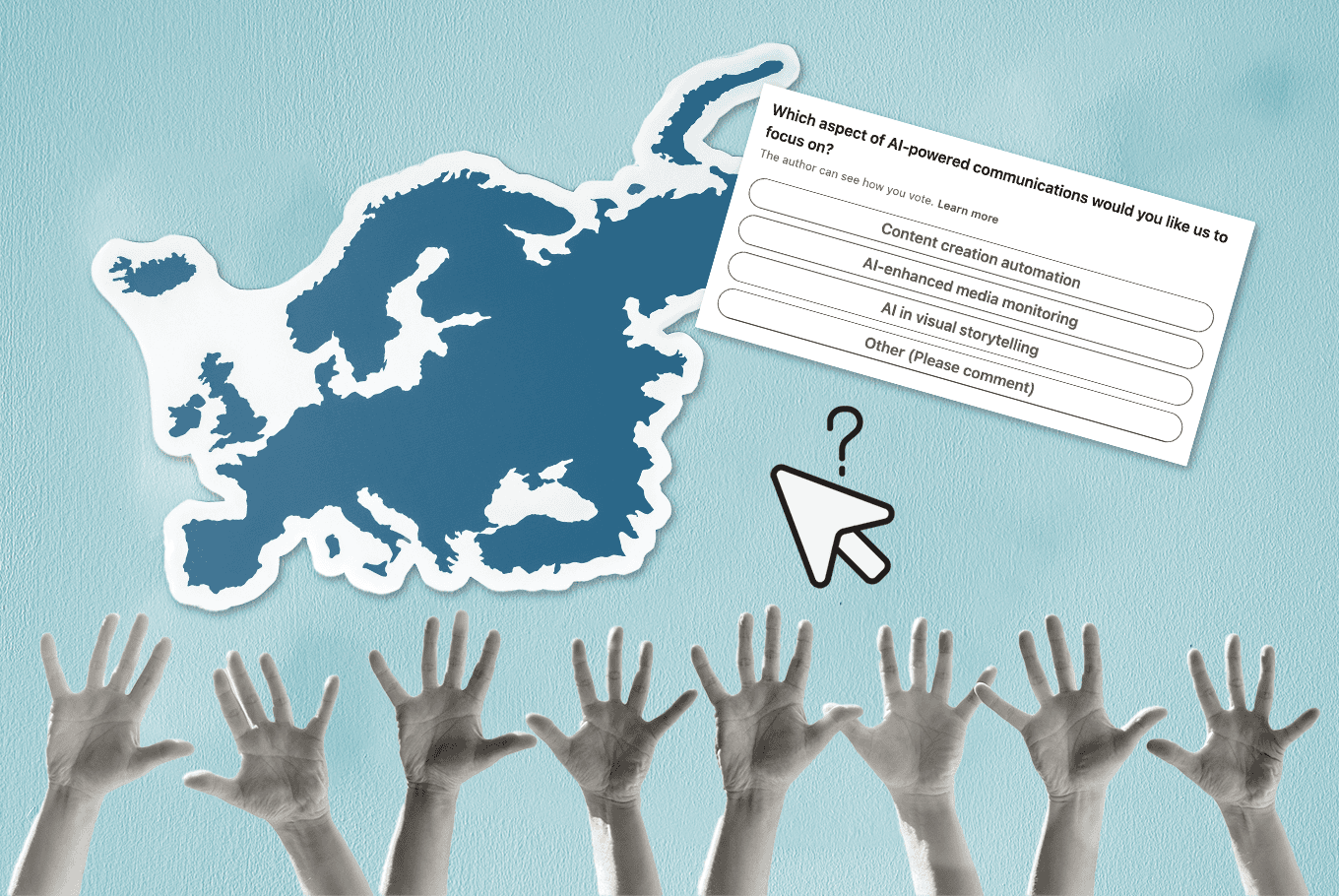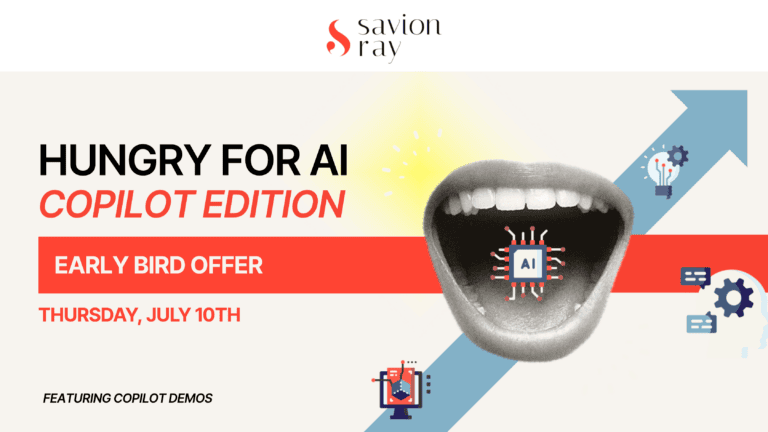Artificial intelligence (AI) is revolutionising the communications industry, offering new ways to enhance efficiency, creativity, and strategic planning. To better understand how AI is being utilised in EU communications, at Savion Ray we conducted a comprehensive survey as part of our upcoming “Hungry for AI” workshop taking place on Thursday, 30th May.
This blog post explores the key findings from our “Use of AI in Policy Comms” survey so far, highlighting current trends, challenges, and opportunities for AI-driven communication strategies. These insights will not only shape our workshop but also contribute to the creation of a practical AI toolkit for communications professionals released later this year, so stay tuned to find out more.
AI adoption in EU communications: A mixed bag
Feelings toward AI usage
The sentiment toward using AI for EU communications is generally positive but cautious. Respondents appreciate the potential of AI to save time, generate ideas, summarise large amounts of text, and assist in proofreading, especially for non-native speakers. However, concerns about reliability, bias, and the need for significant human supervision persist.
Frequency of AI use
The frequency of AI use varies widely among respondents. Some use AI tools daily to aid in various communication tasks, while others engage with AI on a weekly or monthly basis. A notable number rarely use AI, indicating a disparity in adoption and comfort levels. This variation suggests that while some professionals have integrated AI deeply into their workflows, others are still exploring its potential or remain hesitant to adopt these technologies fully.
Current access to AI tools
Access to AI tools is prevalent, with many respondents using free text generators like ChatGPT and digital tools that incorporate AI, such as Hubspot. Paid services like ChatGPT Plus and specialised tools like Microsoft Copilot and Lumen 5 are also in use but to a lesser extent. This trend highlights a significant opportunity for improvement, as the paid tools often provide superior services and bring real value. Encouraging wider adoption of these advanced tools could enhance the effectiveness and efficiency of AI-driven communication strategies.

Integrating AI into communication strategies
Extent of AI integration
Many organizations are still in the early stages of fully integrating AI into their communication strategies. While some have developed AI training programs and have team members with AI skills, others are just beginning to explore AI’s potential.
Challenges and reservations
Common challenges hindering AI adoption include:
- Reliability and Supervision: AI tools still require substantial human oversight to ensure accuracy and prevent misuse.
- Bias: Several respondents highlighted issues with bias in AI outputs, necessitating careful monitoring and adjustments.
- Regulation and Resistance: Some organisations face internal resistance and regulatory hurdles that slow down AI integration.
Effectiveness of AI tools
The survey asked respondents to rate the effectiveness of various AI tools they have used. For text generation, ChatGPT and similar tools are widely regarded as effective, especially for drafting content and proofreading. In the realm of design and multimedia, tools like Canva AI and Lumen 5 are noted for creating social media visuals and video content effectively. However, the survey revealed that AI tools integrated into platforms like Hubspot and Slack are not widely used for routine tasks such as scheduling posts, indicating that the potential of daily task automation is currently underestimated by industry professionals.
Notable AI tools used by respondents include ChatGPT and Grammarly for text generation and editing, and Canva AI and Lumen 5 for creating multimedia content like infographics and videos. Encouraging wider adoption of these advanced tools could significantly enhance the effectiveness and efficiency of AI-driven communication strategies.

The road ahead for AI in EU communications
Areas for improvement
Respondents provided several suggestions for improving AI usage in communications:
- Training and Awareness: Increasing awareness and confidence through comprehensive training programs.
- Better Integration: Developing clearer strategies for AI integration across different departments within organisations.
- Addressing Bias: Implementing robust measures to detect and correct biases in AI outputs.
Future potential
Despite the challenges, many respondents are optimistic about AI’s future in EU communications. They see potential in using AI for:
- Creative idea generation: Helping brainstorm new concepts and strategies.
- Content summarisation: Efficiently summarising lengthy texts and meeting minutes.
- Proofreading and editing: Enhancing the quality of written communication, particularly for non-native speakers.
The survey highlights a cautious yet optimistic approach toward AI in EU communications. While there are significant benefits, the journey toward seamless AI integration is paved with challenges that need addressing. By enhancing training, addressing biases, and fostering better integration strategies, AI can become an invaluable asset in the communication toolkit of EU organisations.
Feeling lost about how AI can actually improve your communication efforts? There’s still time to register for our casual morning workshop. This informative session will cut through the hype and deliver practical insights you can use right away… just like we do.
P.S. Your opinion counts — help us shape the upcoming workshop and the future AI toolkit and fill in our 5-minute “Use of AI in Policy Comms” survey with your insight.



